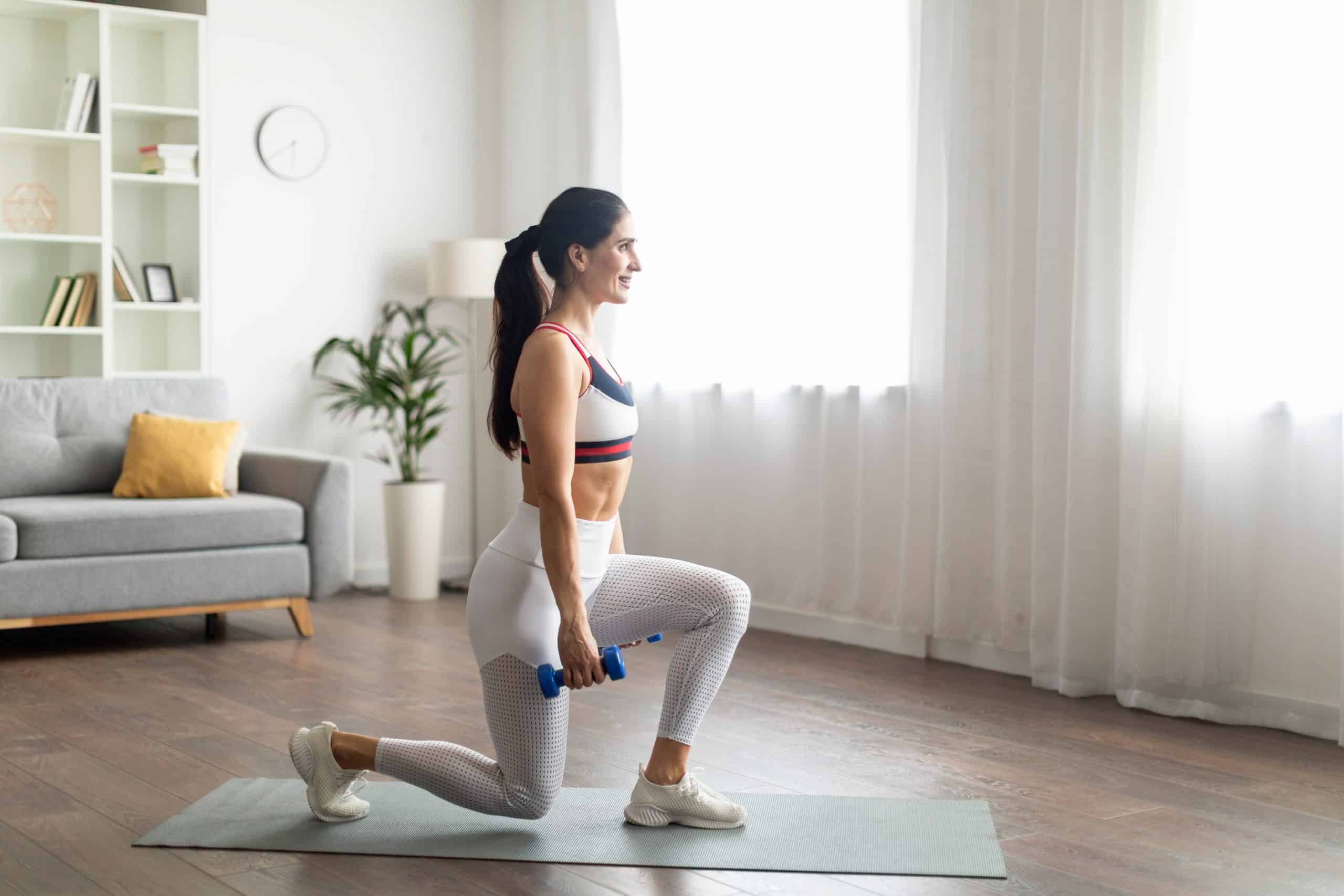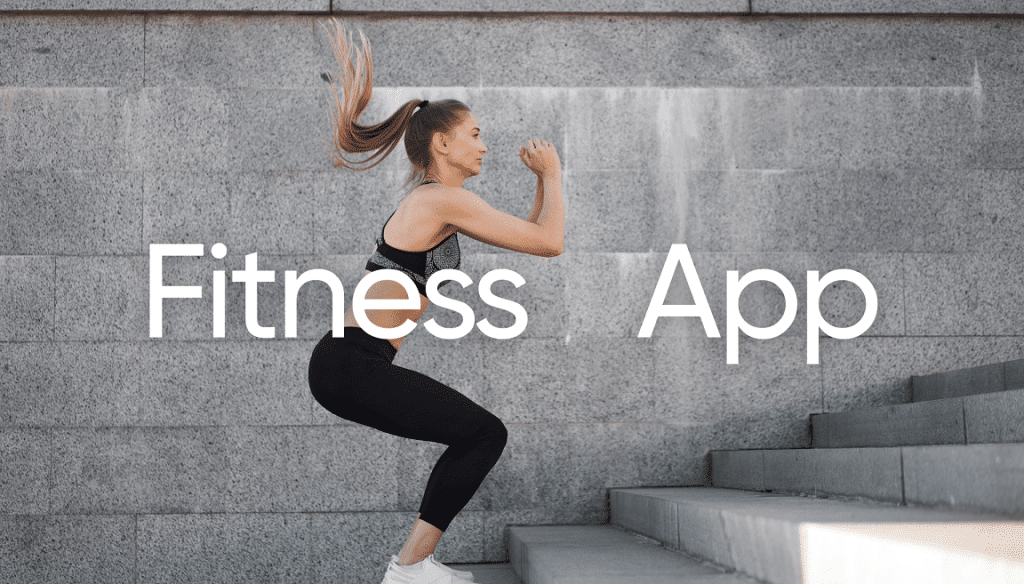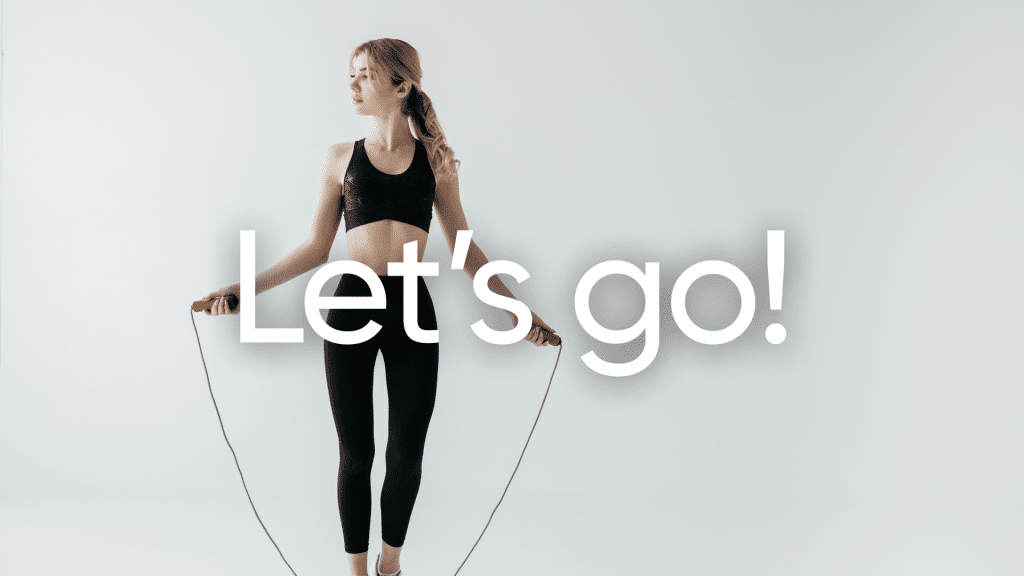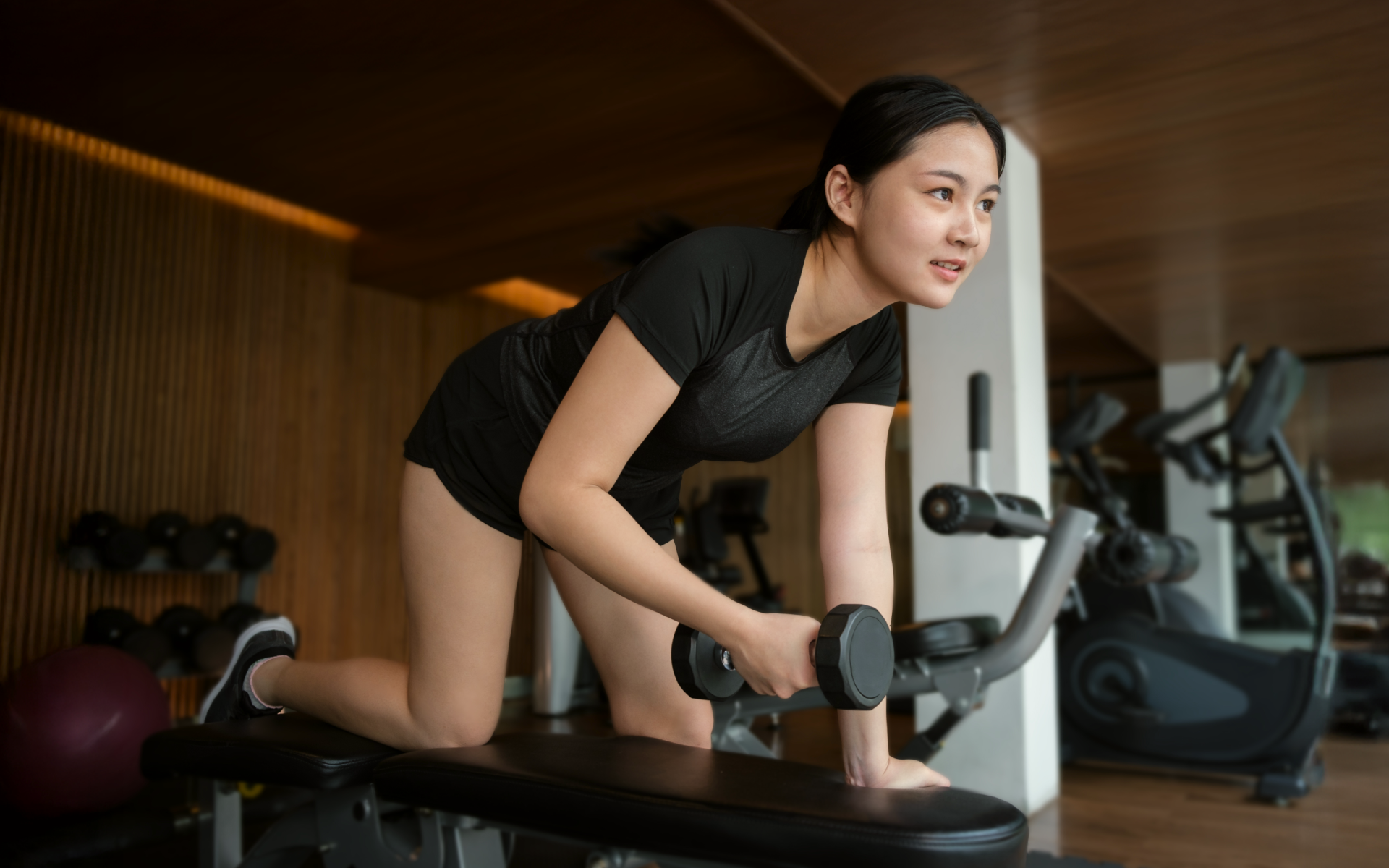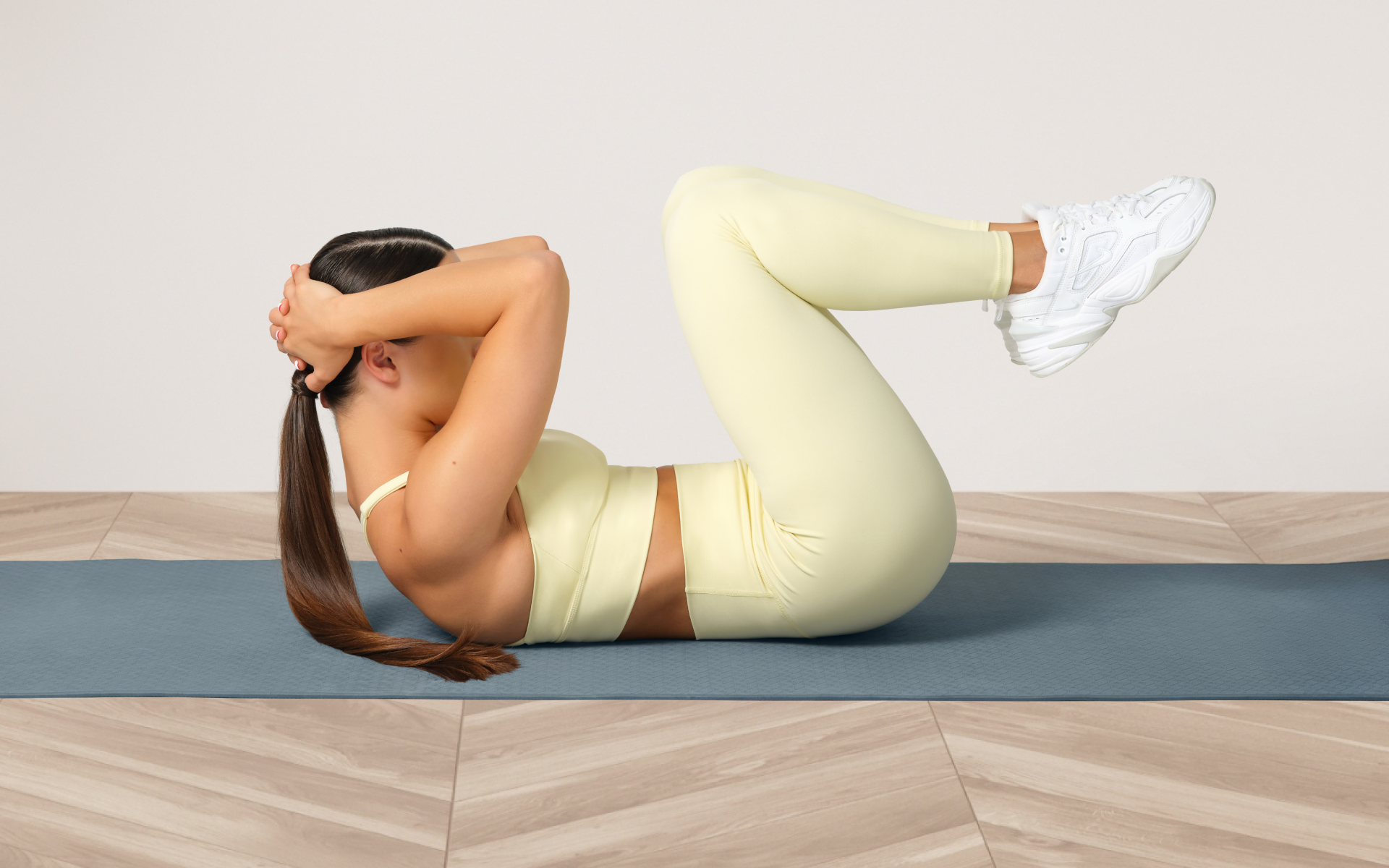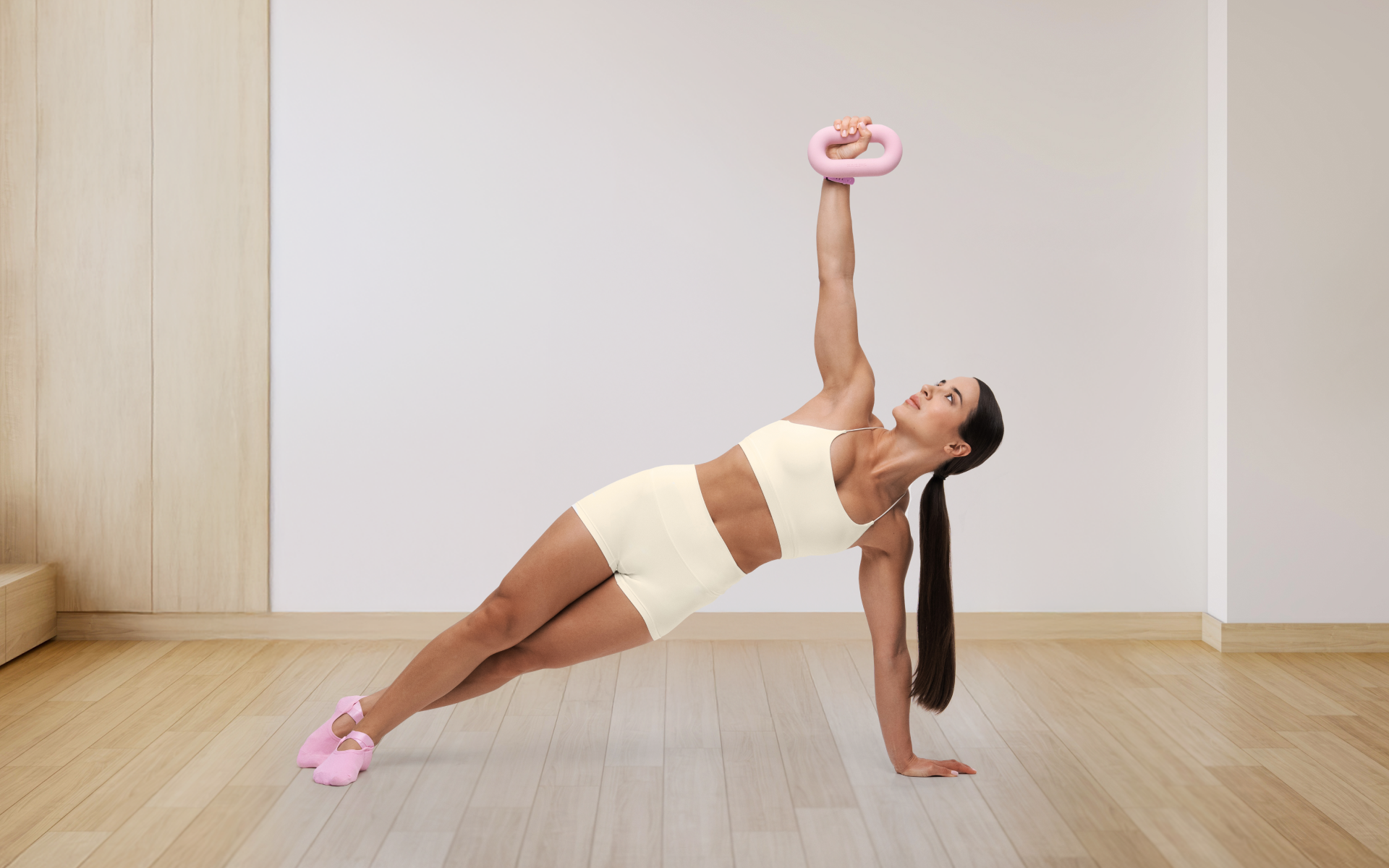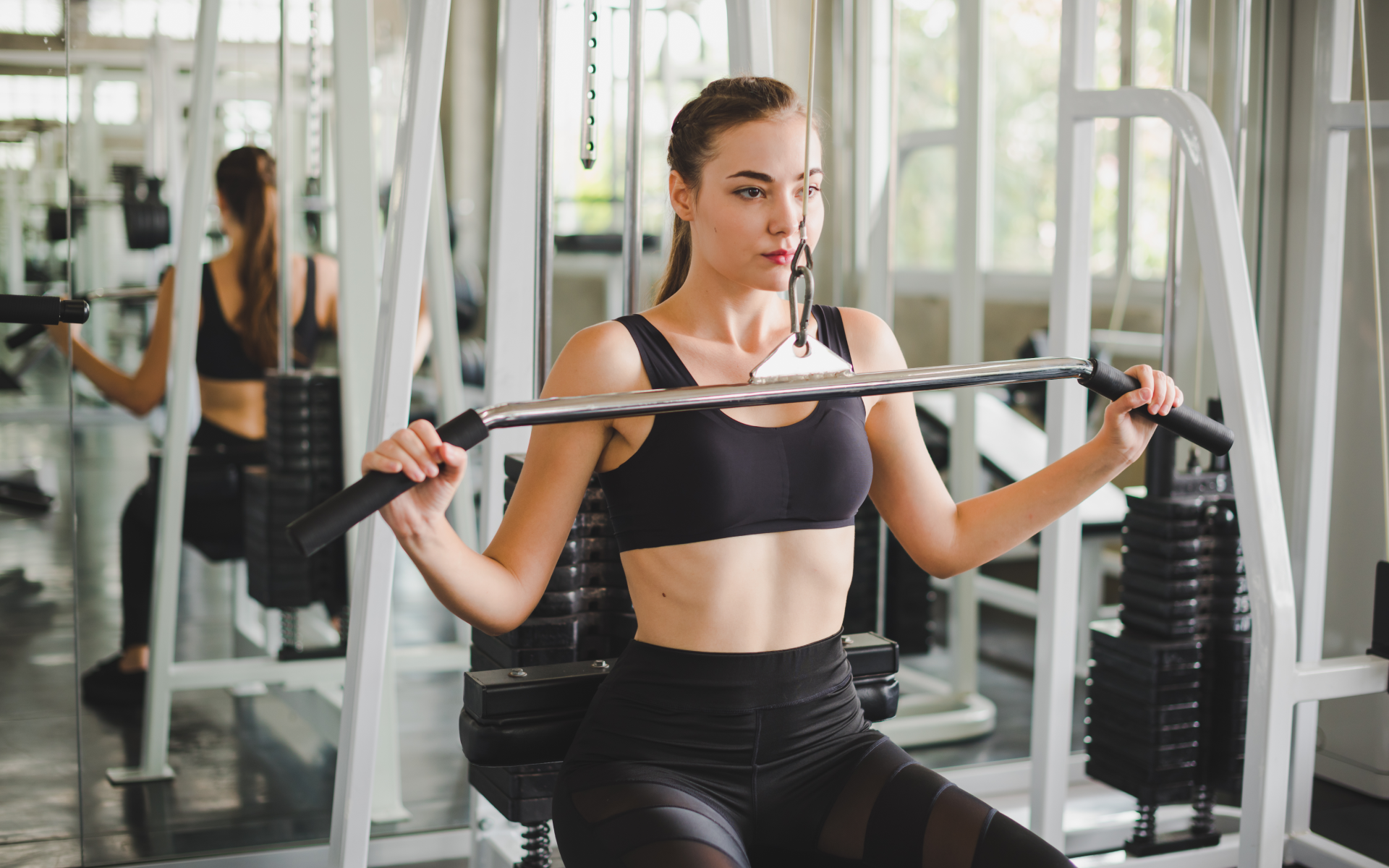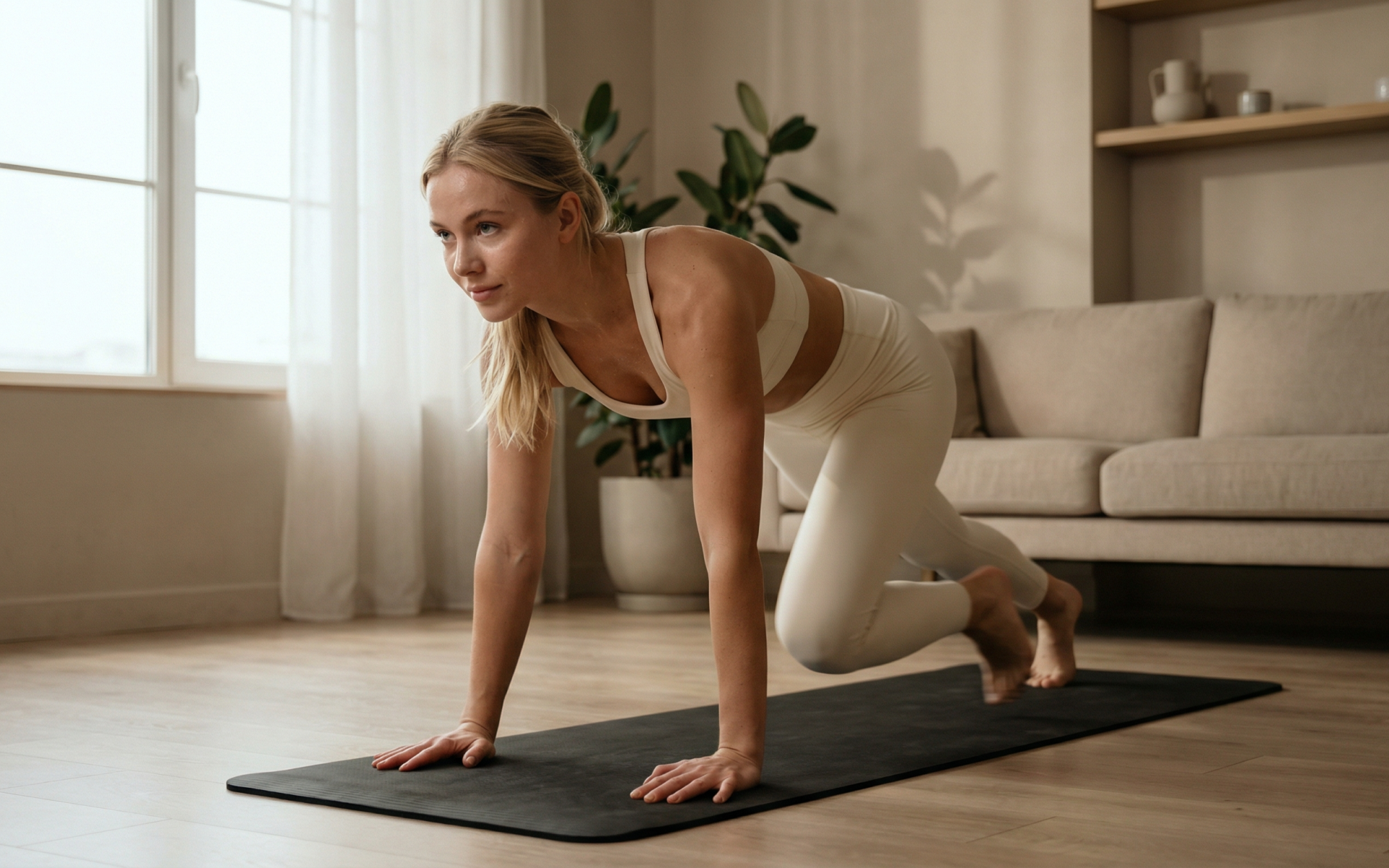A low-impact cardio workout could appeal if you wish to get your heart rate up without sporting an injury. Also, anyone recovering from an injury and beginners as well can enjoy a cardio blast without overworking anything that shouldn’t work too hard.
Working out at home, in a gym, or as a senior worried about your knees is a breeze with low-impact cardio. Before diving into multiple workouts, let’s see why low-impact cardio is the best choice.
What Is a Good Low-Impact Cardio Workout?
A good low-impact cardio workout means you don’t (11):
- Place extra strain on joints
- Leave the ground with both feet
- Pound your feet forcefully
The Medical Associates of Northwest Arkansas describes low-impact cardio that usually keeps one foot on the ground (11). With this intensity, you can still increase your heart rate, keeping it elevated at a comfortable rate.
BetterMe app will provide you with a host of fat-frying fitness routines that’ll scare the extra pounds away and turn your body into a masterpiece! Get your life moving in the right direction with BetterMe!
Low-Impact Cardio Exercises Overview
Some popular low-impact exercises with different intensity levels include:
- Cycling,
- Swimming,
- Walking
Is walking cardio (13)? A brisk walking speed of 3-4 miles per hour is moderate-intensity and 4-5 miles per hour is high-intensity cardio. Walking at the right pace increases your heart rate without pounding your feet.
More low-impact cardio exercises include:
- Assault bike (2)
- Barre (19)
- Circuit training (4)
- Elliptical (17)
- Kettlebell training (12)
- Pilates (16)
- Rowing (18)
- SkiErg (3)
- Tai Chi (7)
- Yoga (21)
What Is the Best Low-Impact Cardio Workout?
WebMD suggests swimming is the best low-impact exercise (10). The water’s buoyancy provides a form of resistance training while you enjoy low-impact cardio without putting strain on your joints. Meanwhile, it has added benefits:
- Swimming can improve flexibility
- It strengthens your arms, core, back, and legs
- It’s great for beginner
Additionally, warm water soothes achy joints, while cold water helps burn more calories (10). That said, here’s how to enjoy the best low-impact cardio swimming routine:
- Swim 10 laps lasting 30-45 seconds each (any stroke)
- Complete 2-3 sets, depending on your fitness level
- Rest for 15-20 seconds between sets
Unfortunately, swimming isn’t always possible. You’ll find more low-impact cardio workouts. But first, look into the benefits, whether or not you can lose weight, and the top exercises available.
Low-Impact Cardio Workout Benefits
Low-impact cardio workouts benefit those who can’t do high-impact exercise or run miles daily. Let’s discover the potential benefits:
Low-Impact Cardio Workouts May Decrease Injury Risks
Grady Health lists the lower risk of joint injuries as one of the main benefits of low-impact workouts (1). Follow the proper form or breathing techniques, but they don’t put as much pressure on your joints. It’s ideal if you have arthritis, old injuries, or haven’t worked your joints long.
Low-Impact Exrcise May Improve Your Health
The Victoria Department of Health shares how cycling, a popular low-impact exercise, can improve (5):
- Cardiovascular fitness,
- Joint mobility,
- Bone strength
Also, regular low-impact cycling can potentially reduce the risk of (5):
- Breast cancer
- Colon cancer
- Depression
- Heart disease
- Hypertension
- Stroke
- Type II Diabetes
Low-Impact Workouts May Increase Flexible Enjoyment
Cardio workouts are more fun when you aren’t challenging yourself to run 20 miles on the same route daily. Also, you might not own a treadmill. Fun cardio allows you to use low-impact training while enjoying the session (9). Dance movements, rock climbing, and dog walking can excite the session.
Read more: Low Impact Workout: A Comprehensive Guide for Beginners
Can You Lose Weight With Low-Impact Cardio?
Low-intensity steady-state exercises can burn more fat than high-intensity training (14). In addition, the Victoria Department of Health and MD Anderson Cancer Center agree that low-impact cardio helps to lose weight (5, 20).
Low-Impact Cardio Workout Calories Burned
The Forbes calorie-burn calculator shows the following calories burned per hour with low-impact workouts if you weigh 150 lbs. (3):
- Elliptical: 648
- Low-Impact Aerobics: 396
- Rowing: 504
- SkiErg: 684
- Swimming: 432
- Walking (4 mph): 350
Will 20 Minutes of Cardio a Day Help to Lose Weight?
The calculated results above show how you burn calories per hour. The Mayo Clinic recommends doing 150 minutes weekly of moderate-intensity exercise or 75 minutes weekly of vigorous exercise to lose weight and maintain health (8). Do 20 minutes of high-intensity cardio four days weekly to lose weight. Or, do 21.5 minutes of moderate cardio daily for the entire week.
What Is Low-Impact But Effective Cardio?
Two kinds of low-impact workouts exist for different goals and fitness levels. Understand how each one is effective for different people.
Steady-State, Low-Impact Training (LIIT)
Low-intensity steady-state movements are deliberate cardio exercises that work well with low-impact workouts (14). You use moderate or low-intensity activities that last longer while deliberately managing the movements to get the most out of the routine.
For example, you swim for 45-60 minutes daily instead of using high-intensity swimming strokes for 30 minutes. The MD Anderson Cancer Center says steady-state, low-impact exercises can help improve the following (20):
- Muscle strength
- Endurance
- Muscle mass
Low-impact, low-intensity (LIIT) trainers maximize their benefits in longer workouts. It also works for seasoned trainers using deliberate movements to improve muscle mass.
Low-Impact HIIT Training
High-intensity, low-impact workouts better suit those with shorter exercise times or who want to burn more calories. High-intensity interval training (HIIT) can consist of low-impact exercises. The calorie-burning calculator from Forbes shows how low-impact HIIT may burn more calories (3):
Getting your heart pumped more will help you burn more calories. Here’s how many calories you burn per hour in moderate versus vigorous-intensity workouts if you weigh 150 lbs.:
| 12-13.9 mph cycling | 576 | 20 mph cycling | 1188 |
| Moderate low-impact calisthenics | 324 | Vigorous low-impact calisthenics | 612 |
| Moderate dance (ballroom, disco) | 396 | Vigorous dance (ballet, twist) | 432 |
| Moderate rowing | 504 | Vigorous rowing | 738 |
| Moderate swimming (general) | 432 | Vigorous swimming (laps) | 720 |
Good Low-Impact Cardio Exercises
Various low-impact exercises are excellent to add to your workouts. Before diving into the different workout plans, let’s see which low-impact exercises are the top choices.
Assault Bike
Medical News Today shares the benefits of a low-impact assault bike session at the gym (2). The assault air bike works every muscle in your body while you cool down with a massive fan. Also, the harder you push, the more resistance it offers. Finally, assault bikes can be tons of fun for any fitness level.
Circuit Training
WebMD recommends circuit training to target strength and low-impact exercise circuits (4). Circuit training is one of the fun cardio options because you can switch gym stations when bored or shake things up in your routine at home. It’s a flexible, low-impact option. Circuit training with or without equipment at home may include the following:
- Bicep curl
- Box step-down
- Lunge
- Plank
- Pull-up
- Push-up
- Squat
- Tricep extension
Gym machines to use in circuit training for low-impact exercises include:
- Hamstring curl machine
- Preacher curl
- Seated leg press
- Stationary bicycles
- Row machine
Circuit training requires moving between 8-10 machines and exercises within a circuit (4). You may perform 10-25 reps on each and have little to no rest between changes. The order of the machines or exercises doesn’t matter, and you can include other low-impact exercises on the coming list.
Cycling
Cycling remains a popular low-impact exercise (5). Meanwhile, it can be high or low-intensity. Cycle for 30 minutes at a low speed without lowering the gears too much. Alternatively, do a high-intensity session where you cycle vigorously for 30 seconds, rest for 10 seconds, and repeat for five minutes.
Dance (Barre)
Today.com shares the incredible benefits beyond the low-impact dance movement of Barre (19). The rising dance movement combines yoga, ballet, and pilates for a low-impact but moderate to high-intensity exercise. It’s a full-body workout that can improve posture, mobility, flexibility, and injury recovery.
Elliptical
The Insider suggests you forget the high-impact treadmill and hop onto the elliptical machine next (17). It helps those with fragile joints and chronic knee, ankle, and back pain. The elliptical machine is low-impact and effectively works the whole body.
Kettlebell Training
The New York Times suggests kettlebell training for anyone with limited mobility because it’s the ideal low-impact exercise (12). Also, kettlebell training can improve grip strength in seniors. Meanwhile, use kettlebell exercises that don’t pound your feet against the floor, such as:
- Angel of death
- Bent-over row
- Goblet squat
- Halo
- Kettlebell curl and press
- Kettlebell deadlift
- Kettlebell glute bridge
- Kettlebell lunge
- Kettlebell reverse lunge
- Kettlebell snatch
- Kettlebell squat and curl
- Kettlebell swing
- Romanian deadlift
- Single-arm row
- Single-leg Romanian deadlift
- Sit-up to press-up
- Split squat
- Sumo squat
- Triceps extension
Pilates
Livestrong says cardio pilates may help increase your lung capacity as a low-impact workout (16). A higher lung capacity means your heart pumps harder to get more oxygen to your muscles. Not all Pilates is cardio. Here are some Pilates cardio exercises Livestrong includes in the cardio routine, which requires swift transitions and low rest times:
- Double-leg stretch
- Criss-cross
- Glute bridge with front raise
- Isometric glute bridge with front fly
- Plank and twist
- Plank push-back
- Push-up
- Roll-down with biceps curl
- Side-kneeling oblique
- Single-leg glute bridge with chest press
- Single-leg raise
- Single-leg stretch
- Single-leg teaser
- Upper abdominal curl
- Wide-stance squat with biceps curl
Rowing
The Cleveland Clinic recommends rowing as a low-impact exercise in a gym or on the lake (18). Meanwhile, it’s another low-impact exercise that welcomes various intensities, depending on your needs. Row more vigorously to burn more calories, or slow down to tighten those core muscles with deliberate movements.
SkiErg
That upright SkiErg machine is a low-impact workout resembling the motions of a skier. Forbes’ calorie-burning calculator shows how you burn 684 calories per hour if you weigh 150 lbs. (3). It focuses on upper-body workouts that help anyone with lower-body injuries or pain.
Swimming
Swimming is the ultimate low-impact exercise. However, Finnish researchers found that high-intensity swimming was helpful in women with arthritis (6). Postmenopausal women with osteoarthritis could walk faster and managed to lose weight after four months of water aerobics resistance training. Increase the intensity of swimming by using different strokes and paces.
Tai Chi
Chinese research suggests Tai Chi can improve cardiorespiratory health as much as running in previously sedentary men (7). Fortunately, Tai Chi doesn’t have the forceful foot-pounding movements of running. It’s an ideal low-impact alternative for beginners or those with creaky joints or pain.
Walking
Walking is one of the best and most accessible low-impact exercises to add to any workout. However, the CDC recommends doing 10,000 steps daily as a beginner (15). Also, ensure you’re walking briskly to achieve a moderate 150 minutes weekly or 30 minutes daily, five days weekly.
Yoga
WebMD recommends faster forms of yoga for low-impact training, like Bikram and Power Yoga (21). The more rapid transitions can elevate your heart rate to add cardio, while controlled breathing helps your body send oxygen to every muscle. Meanwhile, it’s entirely low-impact.
Betterme will keep you laser-focused on your weight loss journey! Nutrient-packed meal plans, fat-blasting workouts, galvanizing challenges and much more. Try using the app and see for yourself!
Low-Impact Cardio Workout Plan to Suit Different Trainers
Let’s find the different low-impact cardio workout plans that suit different needs. You’ll discover beginners and seniors before the gym versus home and HIIT plans.
Low-Impact Cardio Workout for Beginners
Low-impact cardio workouts for beginners often exclude weights, equipment, or machines unless you’re at a gym. If you’re a gym member, please try the workout circuit for gyms. Otherwise, use a LIIT session where you slow things down and control the movements (14).
Complete 10-12 reps of each exercise with slow, deliberate movements lasting 1-2 minutes per exercise. Do 2-3 sets while resting for 30-60 seconds between sets.
- Lateral lunge to reach
- Sumo squat to bent-over row
- Side-kneeling oblique
- Plank walk-out to push-up
- Box step-down
- Bicep curl to pull-up
Low-Impact Cardio Workout for Seniors
Seniors may have painful joints, arthritis, or previous injuries. Low-impact cardio workouts for seniors should include the lowest-impact exercises, like swimming (10). Unfortunately, some might not have access to a pool. If this is the case, let’s plan your workout around weightless, steady-state low-impact activities.
Start with 8-10 reps for each exercise, keeping them slow and deliberate, lasting 1-2 minutes each. Complete 1-2 sets with 30-60 seconds of rest between them. Also, go for a 10-minute brisk walk after your workout finishes.
- Glute bridge
- Step up
- Single-leg extension
- Criss-cross
- Double-leg shoulder stretch
- Roll-down with biceps curl
Low-Impact Cardio Workout at Home
A low-impact cardio workout at home is ideal for anyone with limited space or who wants to lose weight. Add kettlebells or dumbbells to increase resistance to your cardio workout to incorporate the recommended strength training (8). Complete 10-12 reps of each exercise through 3-4 sets with only 30 seconds of rest between sets.
- Weighted squat
- Glute bridge
- Split squat
- Bicep curl
- Angel of death
- Bent-over row
- Romanian deadlift
- Triceps extension
Low-Impact Cardio Workout at Gym
Let’s do an exciting circuit at the gym as your low-impact workout. Remember that a circuit must include a certain amount of time or reps on each machine, with short rest between stations (4). Choose reps based on your fitness level. Follow this machine circuit for the gym:
- Elliptical
- Preacher curl
- SkiErg (swap with another machine if your gym doesn’t have it yet)
- Assault bike
- Rowing machine
- Hamstring curl
- Stationary bicycle
- Seated leg press
Also, use these alternatives for any machines if your gym doesn’t have them. Otherwise, use the alternatives if you want some exercises without machines but with equipment at the gym:
- Kettlebell lunge
- Romanian deadlift
- Sumo squat
- Box step down with dumbbells
- Halo
- Bent-over row
- Goblet squat
- Kettlebell reverse lunge
Low-Impact Cardio HIIT Workout for Fit Trainers or Weight Loss
A low-impact HIIT workout works for those with higher fitness levels seeking to burn more calories (20, 3). Perform each exercise for 30-60 seconds with 2-3 sets while resting for 10-20 seconds between sets. Don’t rest too long, or your heart rate will drop.
- Squat kettlebell thrust (without the burpee jumps)
- Squat to overhead press
- Lateral lunge
- Plank to pike to push-up
- V-ups
- Touchdown jacks
- Halo
- Single-leg Romanian deadlift
Read more: Low Impact Exercises for Seniors to Keep Fit and Healthy
FAQs
Is Low-Impact Cardio Better?
Low-impact cardio is better for seniors, people with arthritis, old injuries, and those who haven’t exercised joints for some time. One of Grady’s Health’s top low-impact exercise benefits is that it places less pressure on your joints and reduces injury risks (1).
Is 30 Minutes of Cardio Enough?
Thirty minutes of cardio is enough. The Mayo Clinic recommends 150 minutes weekly for moderate-intensity cardio with two strength-training days (8). Split your 150 minutes into five cardio training days for 30 minutes per workout.
Should I Do Cardio Every Day?
You could do cardio daily, but the Mayo Clinic recommends adding two strength-training days (8). Use the recommended 30 minutes of cardio five days weekly and fill the other two days with strength or resistance training. Alternatively, use kettlebells to add resistance to cardio workouts if you do them daily.
The Bottom Line
Low-impact cardio workouts offer beginners and those with joint issues an opportunity to benefit as much as someone joining a high-impact HIIT session. Some workouts are easy at home, while others work in the gym. Choose the training that suits you, and start yours today.
DISCLAIMER:
This article is intended for general informational purposes only and does not serve to address individual circumstances. It is not a substitute for professional advice or help and should not be relied on for making any kind of decision-making. Any action taken as a direct or indirect result of the information in this article is entirely at your own risk and is your sole responsibility.
BetterMe, its content staff, and its medical advisors accept no responsibility for inaccuracies, errors, misstatements, inconsistencies, or omissions and specifically disclaim any liability, loss or risk, personal, professional or otherwise, which may be incurred as a consequence, directly or indirectly, of the use and/or application of any content.
You should always seek the advice of your physician or other qualified health provider with any questions you may have regarding a medical condition or your specific situation. Never disregard professional medical advice or delay seeking it because of BetterMe content. If you suspect or think you may have a medical emergency, call your doctor.
SOURCES:
- 5 Benefits of Low-Impact Exercise | Grady Health (2022, gradyhealth.org)
- Assault Air Bike Review 2023: Pros, Cons, and Alternatives (2023, medicalnewstoday.com)
- Calories Burned Calculator for Activities and Sport – Forbes (2023, forbes.com)
- Circuit Training: What You Do, Benefits, and More (2022, webmd.com)
- Cycling | Health Benefits (n.d., betterhealth.vic.gov.au)
- Effects of High-Intensity Resistance Aquatic Training on Body Composition and Walking Speed in Women With Mild Knee Osteoarthritis: A 4-Month RCT With 12-Month Follow-Up (2017, oarsijournal.com)
- Effects of Tai-Chi and Running Exercises on Cardiorespiratory Fitness and Biomarkers in Sedentary Middle-Aged Males: A 24-Week Supervised Training Study (2022, ncbi.nlm.nih.gov)
- Exercise for Weight Loss: Calories Burned in 1 Hour (2021, mayoclinic.org)
- Fun Cardio: The New Way to Enjoy a Workout & Get in Shape (2022, betterme.world)
- Health Benefits of Swimming (2022, webmd.com)
- High-Impact and Low-Impact Exercise (n.d., mana.md)
- How to Get Into the Swing of Kettlebell Training (2023, nytimes.com)
- Is Walking Cardio? Here’s What Experts Say (2022, betterme.world)
- Low-Intensity Steady-State Cardio: Yay Or Nay? (2022, betterme.world)
- Stepping Up to Physical Activity | Lifestyle Coach Facilitation Guide (n.d., cdc.gov)
- This 20-Minute Low-Impact Pilates Workout Will Get Your Heart Pumping (2023, livestrong.com)
- Treadmills Burn More Calories, But Ellipticals Work More Muscles (2022, insider.com)
- What Are the Health Benefits of Rowing? (2021, health.clevelandclinic.org)
- What Is Barre? Everything You Need to Know About the Popular Workout (2022, today.com)
- Why Slow, Low-Impact Exercise Can Be Good for Your Health (n.d., manderson.org)
- Yoga: Benefits, Intensity Level, and More (2023, webmd.com)
